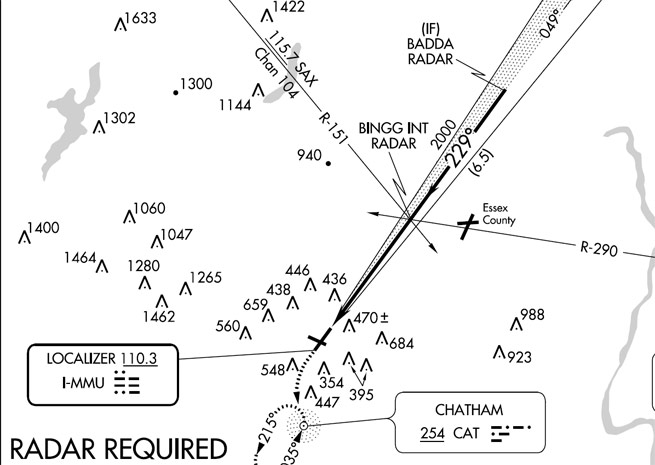
An instrument pilot arrives at the FBO for a proficiency check to find the instructor waiting with two cups of coffee and an approach plate open on the table: the ILS or LOC RWY 23 approach to New Jersey’s Morristown Municipal Airport.
"We’re going to Jersey?"
"Maybe."
If you recognize that snippet of dialog as from a famous 1972 mob movie, that’s affirmative. But even if you never fly to this destination, the IAP makes good review material for a ground session of an IFR proficiency session (and it, too, borrows an exclamation from the movie that found usage in a subsequent TV series—check the names of the fixes along the approach).
Although the IAP lacks the eye-catching complexity of some procedures, some components will draw an IFR pilot’s eye. Take the bold notice “RADAR REQUIRED” on the planview and the smaller note stating that ADF is required. Why the different presentations?
Aeronautical Information Manual 5-4-5 explains: A planview note appears "when radar or other equipment is required for procedure entry from the en route environment." (That’s also why the IAP seems short on initial approach fixes.) When equipment is required outside the final approach segment, including the missed approach, the notice appears in "the notes box of the pilot briefing portion" of the chart. This IAP contains an example of each.
Given Morristown’s location beneath a shelf of New York Class B airspace, keep your radio close, and your visual scanning closer on the approach course, which passes by the Essex County Airport in Caldwell (between BADDA and BINGG) at 2,000 feet. A caution: At night, or when distracted, pilots have been known to mistake one field for the other.
Traffic congestion and radio saturation can compound each other. A bizjet on approach vectors deviated in response to a collision-avoidance alert. Then, "I returned to our assigned altitude and my first officer attempted to notify ATC. New York Approach was so busy that she was unsuccessful," said the captain’s filing with the Aviation Safety Reporting System.
Practicing IFR procedures under VFR in a busy environment is good prep, but also not distraction-proof. A Piper single landed gear-up on Runway 31 after aborting a landing on Runway 23 in gusty crosswinds.
The runway change was complicated by frequency congestion, and a confused pilot on the ground whose unpredictable actions kept the Piper pilot mesmerized—at the expense of pre-landing checks.



